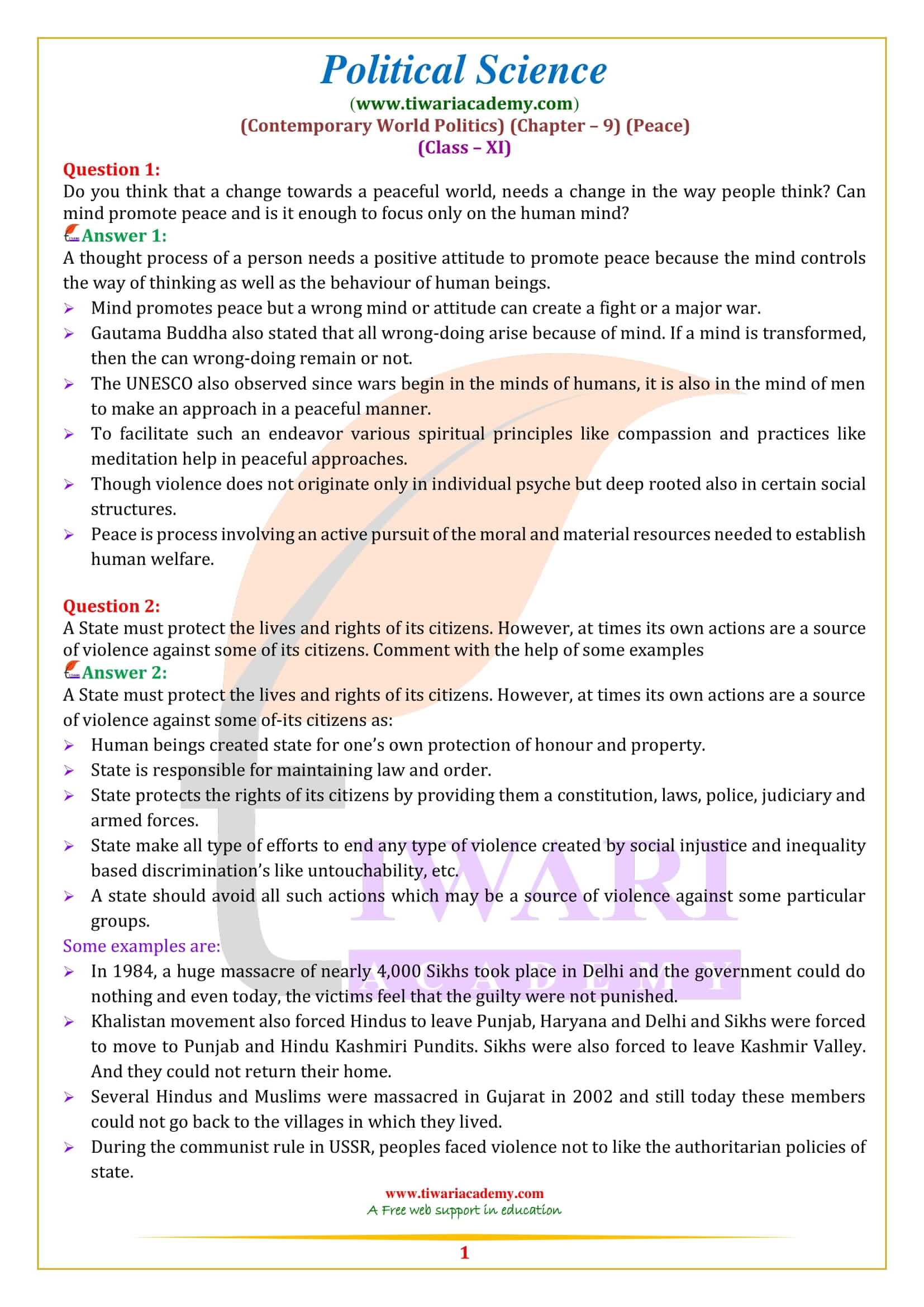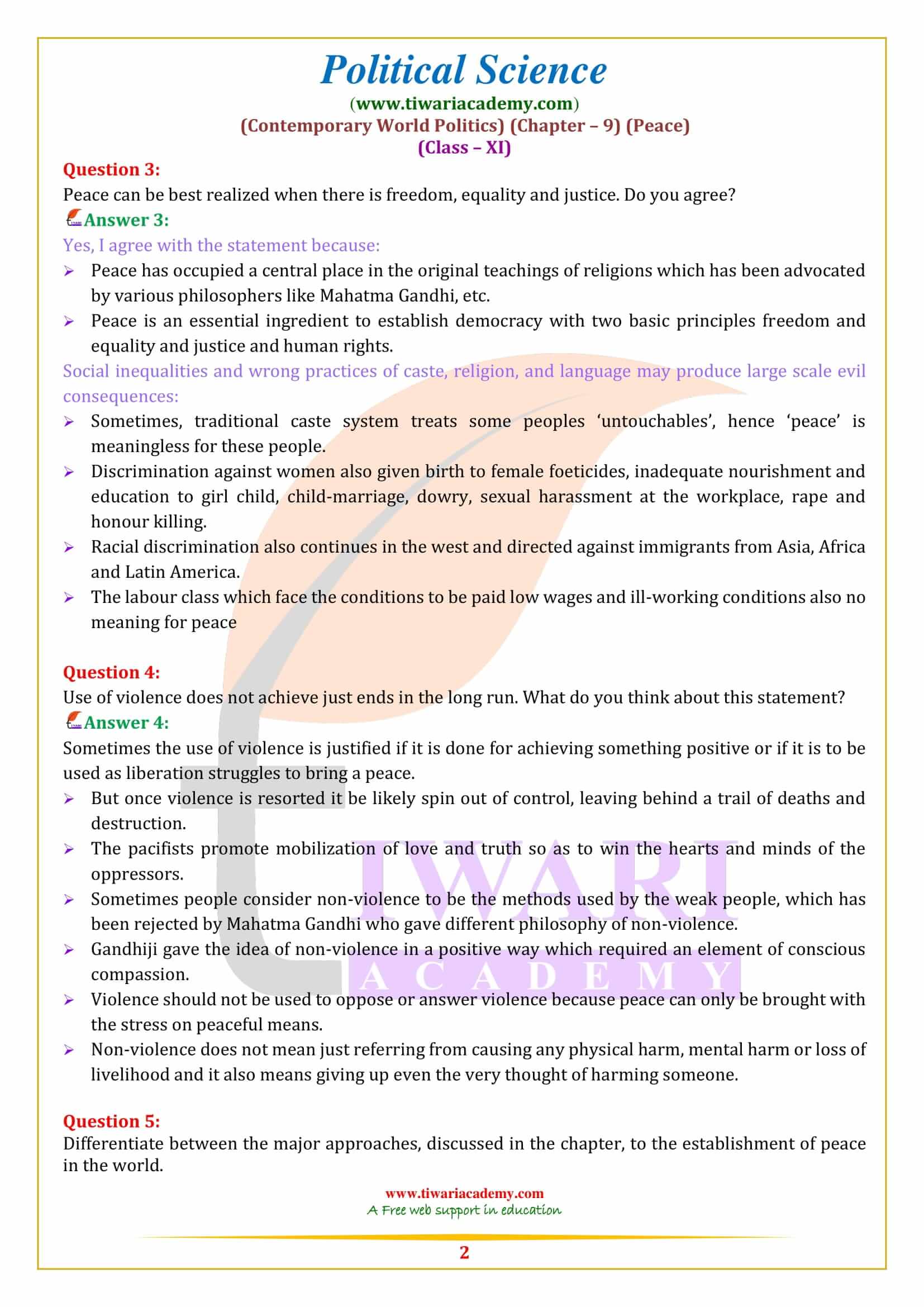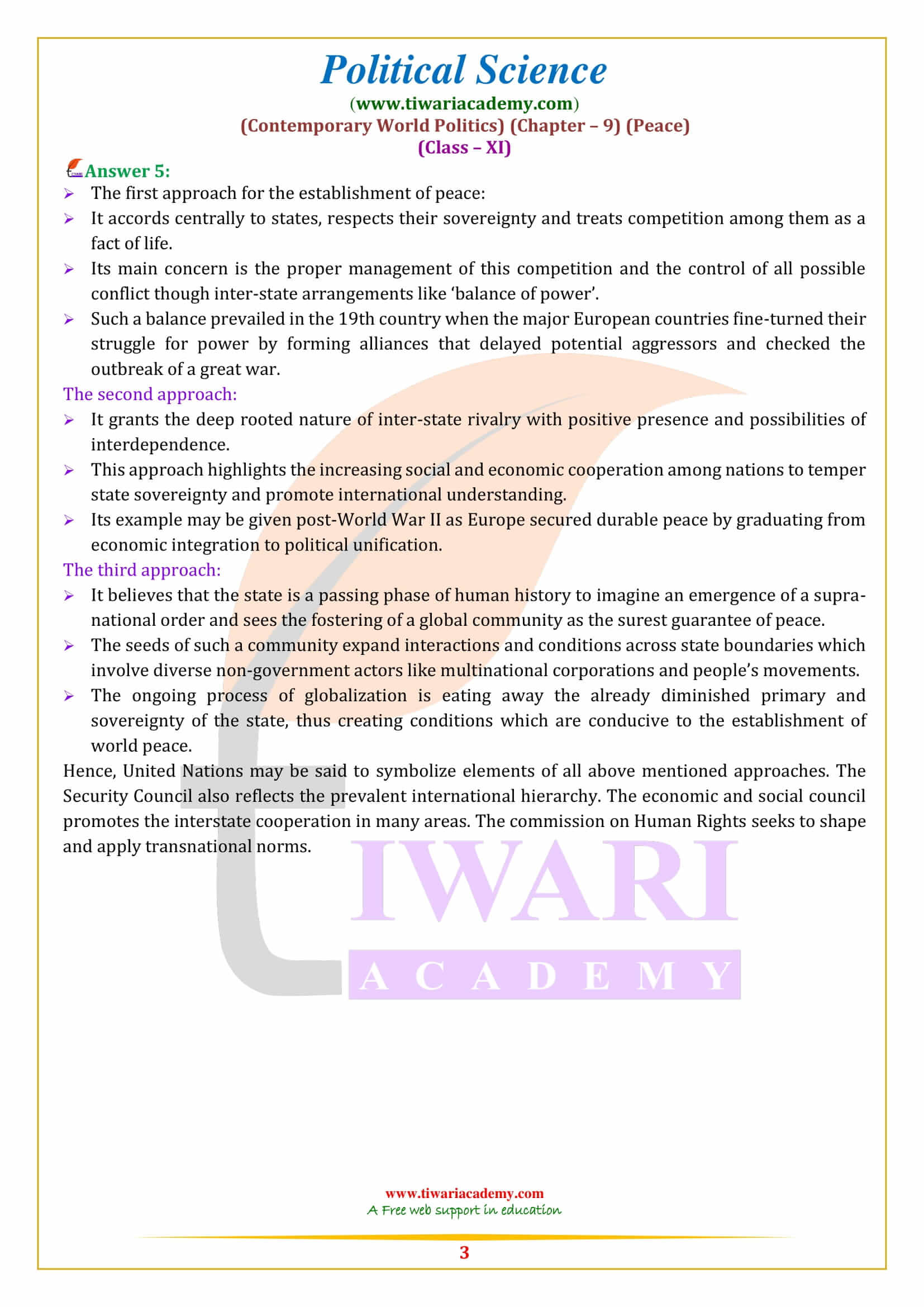NCERT Solutions for Class 11 Political Science Chapter 9 Peace in Hindi and English Medium prepared and modified format of question-answers updated for new session 2025-26. Get here extra important questions based on Political Theory class 11 Political Science chapter 9 with answers and explanation.
NCERT Solutions for Class 11 Political Science Chapter 9
Do you think that a change towards a peaceful world, needs a change in the way people think? Can mind promote peace and is it enough to focus only on the human mind?
A thought process of a person needs a positive attitude to promote peace because the mind controls the way of thinking as well as the behaviour of human beings.
- Mind promotes peace but a wrong mind or attitude can create a fight or a major war.
- Gautama Buddha also stated that all wrong-doing arise because of mind. If a mind is transformed, then the can wrong-doing remain or not.
- The UNESCO also observed since wars begin in the minds of humans, it is also in the mind of men to make an approach in a peaceful manner.
- To facilitate such an endeavor various spiritual principles like compassion and practices like meditation help in peaceful approaches.
- Though violence does not originate only in individual psyche but deep rooted also in certain social structures.
- Peace is process involving an active pursuit of the moral and material resources needed to establish human welfare.
Peace can be best realized when there is freedom, equality and justice. Do you agree?
Yes, I agree with the statement because:
1. Peace has occupied a central place in the original teachings of religions which has been advocated by various philosophers like Mahatma Gandhi, etc.
2. Peace is an essential ingredient to establish democracy with two basic principles freedom and equality and justice and human rights.
Social inequalities and wrong practices of caste, religion, and language may produce large scale evil consequences:
- Sometimes, traditional caste system treats some peoples ‘untouchables’, hence ‘peace’ is meaningless for these people.
- Discrimination against women also given birth to female foeticides, inadequate nourishment and education to girl child, child-marriage, dowry, sexual harassment at the workplace, rape and honour killing.
- Racial discrimination also continues in the west and directed against immigrants from Asia, Africa and Latin America.
- The labour class which face the conditions to be paid low wages and ill-working conditions also no meaning for peace.
Use of violence does not achieve just ends in the long run. What do you think about this statement?
Sometimes the use of violence is justified if it is done for achieving something positive or if it is to be used as liberation struggles to bring a peace.
- But once violence is resorted it be likely spin out of control, leaving behind a trail of deaths and destruction.
- The pacifists promote mobilization of love and truth so as to win the hearts and minds of the oppressors.
- Sometimes people consider non-violence to be the methods used by the weak people, which has been rejected by Mahatma Gandhi who gave different philosophy of non-violence.
- Gandhiji gave the idea of non-violence in a positive way which required an element of conscious compassion.
- Violence should not be used to oppose or answer violence because peace can only be brought with the stress on peaceful means.
- Non-violence does not mean just referring from causing any physical harm, mental harm or loss of livelihood and it also means giving up even the very thought of harming someone.
Differentiate between the major approaches, discussed in the chapter, to the establishment of peace in the world.
The first approach for the establishment of peace:
- It accords centrally to states, respects their sovereignty and treats competition among them as a fact of life.
- Its main concern is the proper management of this competition and the control of all possible conflict though inter-state arrangements like ‘balance of power’.
- Such a balance prevailed in the 19th country when the major European countries fine-turned their struggle for power by forming alliances that delayed potential aggressors and checked the outbreak of a great war.
The second approach:
It grants the deep rooted nature of inter-state rivalry with positive presence and possibilities of interdependence.
- This approach highlights the increasing social and economic cooperation among nations to temper state sovereignty and promote international understanding.
- Its example may be given post-World War II as Europe secured durable peace by graduating from economic integration to political unification.
The third approach:
- It believes that the state is a passing phase of human history to imagine an emergence of a supra-national order and sees the fostering of a global community as the surest guarantee of peace.
- The seeds of such a community expand interactions and conditions across state boundaries which involve diverse non-government actors like multinational corporations and people’s movements.
- The ongoing process of globalization is eating away the already diminished primary and sovereignty of the state, thus creating conditions which are conducive to the establishment of world peace.
Hence, United Nations may be said to symbolize elements of all above mentioned approaches. The Security Council also reflects the prevalent international hierarchy. The economic and social council promotes the interstate cooperation in many areas. The commission on Human Rights seeks to shape and apply transnational norms.




